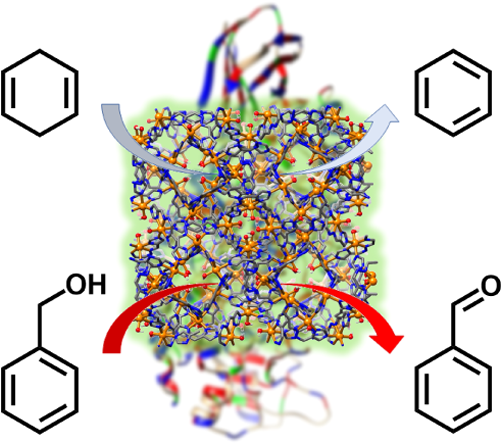
Chong-Wei Ding,†,‡Wenzhi Luo,‡Jie-Yi Zhou,†,‡ Xin-Jie Ma,‡Guang-Hui Chen,‡ Xiao-Ping Zhou,*,†and Dan Li*

Abstract: Metalloenzymes are powerful biocatalysts that can catalyze particular chemical reactions with high activity, selectivity, and specificity under mild conditions. Metal-organic frameworks (MOFs) composed of metal ions or metal clusters and organic ligands with defined cavities have the potential to impart enzyme-like catalytic activity and mimic metalloenzymes. Here, a new metal−organic framework implanted with hydroxo iron(III) sites with the structural and reactivity characteristics of iron-containing lipoxygenases is reported. Similar to lipoxygenases, the hydrogen atoms and electrons of the substrate can transfer to the hydroxo iron(III) sites, showing typical proton-coupled electron transfer behavior. In the reactivity mimicking biology system, similar to alcohol oxidase, the material also catalyses the oxidation of alcohol into aldehyde by using O2 with a high yield and 100% selectivity under mild conditions, without the use of a radical cocatalyst or photoexcitation. These results provide strong evidence for the high structural fidelity of enzymatically active sites in MOF materials, verifying that MOFs provide an ideal platform for designing biomimetic heterogeneous catalysts with high conversion efficiency and product selectivity.
Keywords:metal-organic frameworks, proton-coupled electron transfer, hydroxo iron(III), oxidation of alcohol, catalysis.




